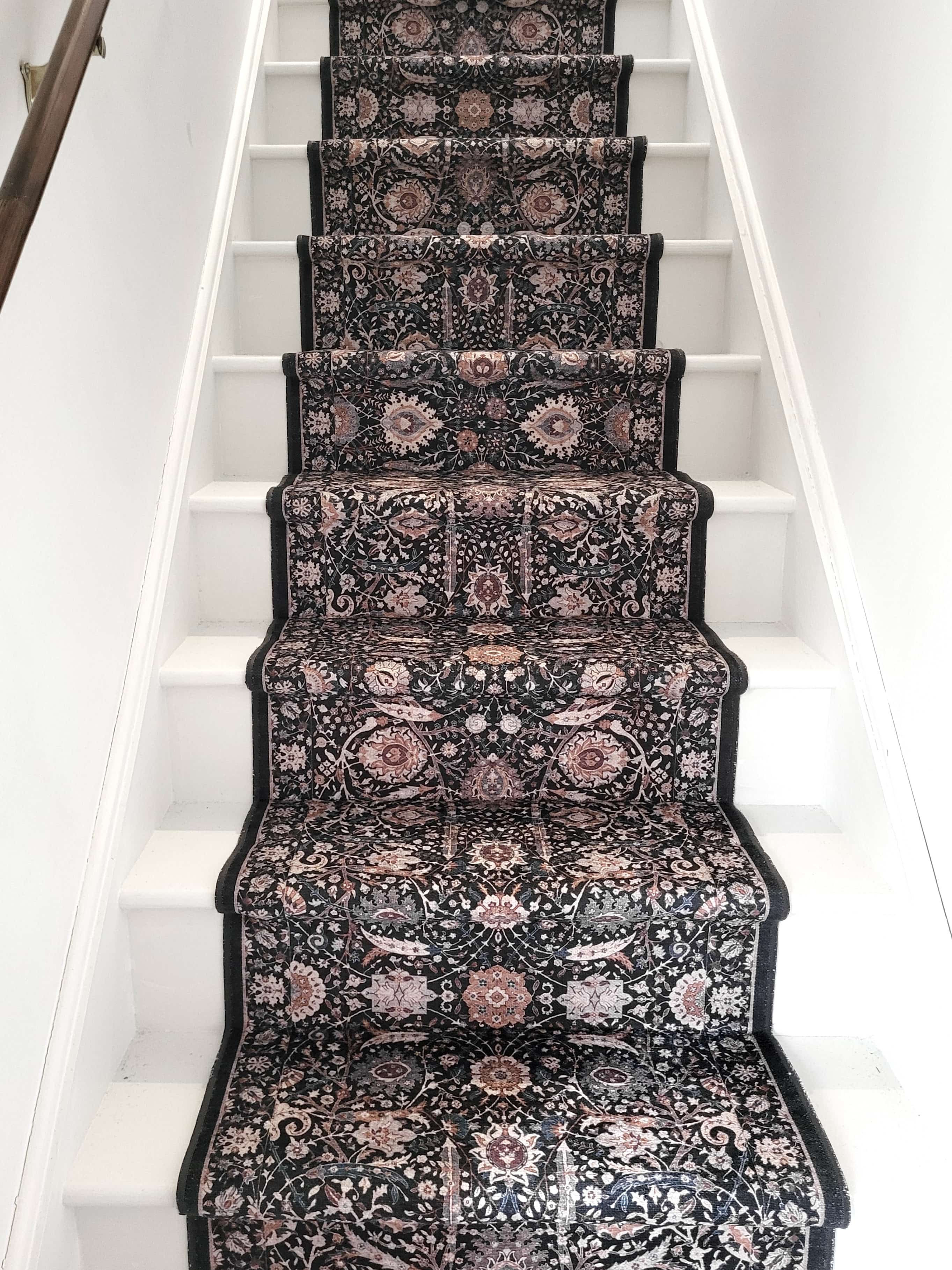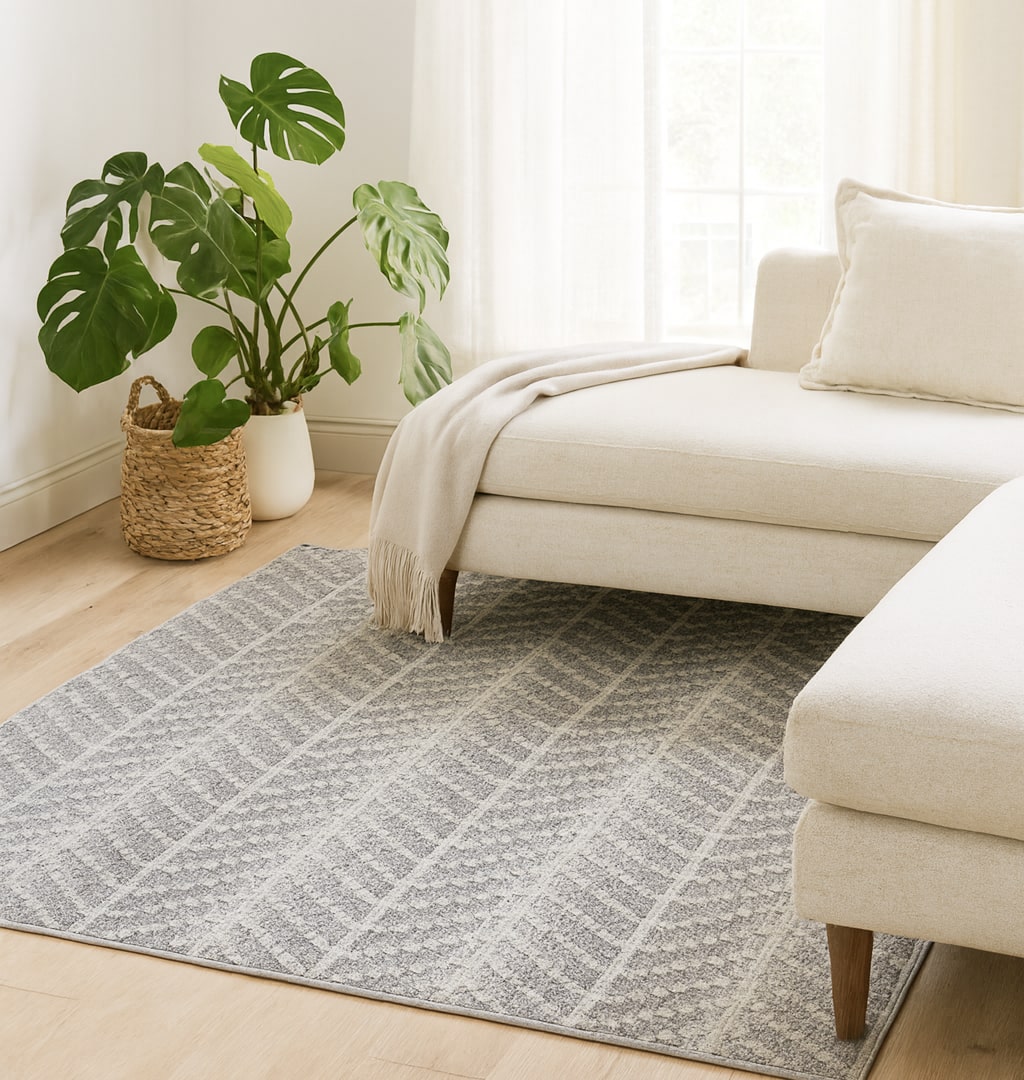Hop on the rug with us…and get to know how illustrator Rocío Egío lives life well.
Rocío Egío may no longer live in Alicante, in the southeastern part of Spain where she was born, but the sea-side town’s sunny disposition ingrained itself within her. So much so, that, even though she now resides in the alps of Switzerland, oodles of warmth and exuberance flow out of her. Egío’s bubbly personality shines through the work she creates as an illustrator and designer, which often reflects her Mediterranean upbringing.
“It's super warm there, the sun is super strong,” she says. “The colors here in Switzerland are more like pastel and of a gray palette, and so this is why I use bold colors in my work, to remind me of home.” The spirit of Alicante can be found in the geometric shapes and vibrant patterns of her illustrations. It’s what draws a lot of fans to her work, and has earned her clients from The New York Times to the UN, too.
But her work isn’t just a playful way for Egío to interact with the world, it became a necessary one. From the age of 10, she started experiencing troubles with reading comprehension problems and had to create schemes to better understand what she was reading. Later, in high school, she studied by creating infographics, with colors, illustrations and different typographies – all by hand. It’s what led her to visual communication and what fuels the way she works now.
Turning dyslexia on its head
“I didn’t know I had dyslexia until I was 24 years old,” she says. “For me, in that moment, it was like, ‘Oh, now everything makes sense.’” Far from seeing it as a challenge to overcome, Egío embraced it. “What I do now and how I do it is thanks to that condition that I had that I didn't even know I had. So I felt really grateful for it; it was like I’d been given a gift,” she says.
And Egío has found ways to share that gift with others, going on to create a new typeface called Dyslexic Font, together with Indian designer Pranav Bhardwaj, and designing picture quotes to encourage others to embrace their uniqueness.
“I always wanted to be an artist,” she says. “But in my family, school is everything.” So she studied architecture, and it was while studying that she ended up in Switzerland, taking advantage of her university’s exchange program that allowed students to spend some time abroad. Egío fell in love with Lausanne, and returned there after her studies to make a home – and a name – for herself.
Today, Egío has become known for her food designs and illustrating recipes. It’s yet another aspect of her personality that aligns with her work. “In Mediterranean culture, we love to share the table, we love to eat, we love to cook,” she says. “I come from a big family. Every Sunday, the family would gather together to have lunch.”
While this doesn't happen in Switzerland, her designs are a way to recreate that feeling. “When I started doing personal projects, they were all related [to] food,” she says. “So it was like I was building my portfolio with this topic because I knew about it and it was something that was natural for me to talk about. It was on my social media, on my website, so clients started seeing that and it became a part of what I do now.”
Food, glorious food
Part of Egío's process in drawing food is to discover the story behind a recipe and transform that into her language. She recalls illustrating a book on smoothies and how she went to buy the ingredients to make them, studying the color and texture of what came out of the blender with great interest.
“Sometimes you want to illustrate fruits that you haven’t ever seen before or haven’t seen for a long time, so it's really that part of experimenting with the recipe that gives me the inspiration to go to the paper,” she says. “Because of the dyslexia, what I do is translate things into a visual language. So this is really what I like – how can I translate this into a colorful and simple shape that is going to work?”
For now, she keeps illustrating other people’s recipes but Egío has her own book of recipes she’d like to put together. Family ones, from Alicante, that have been passed down from the women in her family, like her grandmother. “It’s a huge personal prayer that I have on the top of my to-do list,” she says. “I will try to fit this in one day, but there are always other priorities. For sure, it is something that I have to do someday.” It's a dream that would no doubt surely make her sunshiny soul even warmer.
Stay connected
Get the Well Woven newsletter in your inbox! Check the bottom right corner of our site for the email sign-up.
Follow us on Instagram and Facebook for updates, community stories, style inspiration, and sales alerts!
(Feature image courtesy of Pati Gagarin.)





Share:
How Busayo Olupona tapped into her heritage to create a sought-after fashion label.
5 Tips on How to Master the Art of Rug Layering